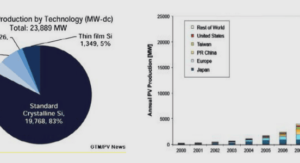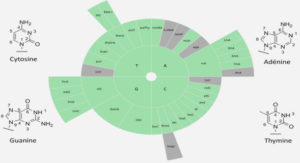Atmospheric icing is a generic term for all types of accretion of frozen water substance [1] [25]. Various processes where water in various forms in the atmosphere freezes and adheres to objects exposed to the air. In general, the atmospheric icing accretion can be classified in the following types.
(1) Precipitation icing
(2) In-cloud icing
(3) Hoar frost
Precipitation icing
Precipitation icing occurs in several forms such as freezing rain (glaze or rime), wet snow and dry snow depending on how the precipitation is influenced by variations in temperature near the ground and up to a few hundred meters above ground. Such icing is experienced any place where precipitation, in combination with freezing temperatures, occurs. Different types of precipitation icing are described below:
Glaze: Glaze has a density higher than 900 kg/m3 [26]. Glaze grows in a clear, smooth structure with no air bubbles , It is usually formed from freezing precipitation, rain or drizzle, or from clouds with large liquid water content and large drop size. The freezing rate of droplets is less than the impingement rate, which causes part of the drop to splash or flow around the conductor before freezing. While glaze contains no air bubbles as such, in strong wind situations it grows in irregular shapes incorporating pockets of air.
Rime: Rime has a density of 300 – 900 kg/m3 [27]. It is usually classified as soft rime or hard rime: Soft rime has a density of less than 600 kg/m3.It is a white ice deposition that forms when the water droplets in light freezing fog or mist freeze to the outer surfaces of objects, with calm or light wind. The fog freezes usually to the windward ide of tree branches, wires, or any other solid objects. Soft rime is similar in appearance to hoar frost; but whereas rime is formed by vapor first condensing to liquid droplets (of fog, mist or cloud) and then attaching to a surface, hoar frost is formed by direct deposition from water vapor to solid ice. Soft rime grows in a triangular or pennant shape pointed into the wind. The granular structure results from the rate of freezing of individual drops, each drop freezing completely before another one impinges on the surface. They are fragile and can be easily shaken off objects. Factors that favor soft rime are small drop size, slow accretion of liquid water, high degree of super-cooling, and fast dissipation of latent heat of fusion.
Hard rime has a density ranging from 600 to 900 kg/m3 and tends to grow in a layered structure with clear ice mixed with ice containing air bubbles [28]. In this case the freezing rate of the droplets is equal to the impingement rate. It is a white ice that forms when the water droplets in fog freeze to the outer surfaces of objects. It is often seen on trees at mountains and ridges in winter, when low hanging clouds cause freezing fog. This fog freezes to the windward (wind-facing) side of tree branches, buildings, or any other solid objects, usually with high wind velocities and air temperatures between -2 and -8 °C (28.4 and 17.6 °F). Hard rime formations are difficult to shake off; they have a comb-like appearance, unlike soft rime, which looks feathery or spiky, or clear ice, which looks homogeneous and transparent.
Both rime types are less dense than glaze and cling less tenaciously, therefore damage due to rime is generally minor compared to glaze.
Wet snow: Wet snow has a density of 300 – 800 kg/m3 . It is usually defined as snow which falls at temperatures equal to or above -5 °C. Under these conditions, the snow is sticky enough to adhere to surfaces easily and accumulate rapidly. Wet snow tends to build on tops and windward surfaces of structures and in cylindrical layers around conductors [1]. At temperatures below about -2 °C, snow particles are usually too dry to adhere to surfaces in appreciable quantities. If the temperature falls below 0 °C after the accretion of wet snow, the accumulation freezes into a dense hard layer with strong adhesion. Transmission line problems have occurred due to wet snow events.
Dry snow: Dry snow accretes at subfreezing temperatures [29-30]. This type of accretion appears only when wind speed is very low i.e. below 2 m/s. The density of dry snow is, in general, very low, not exceeding 100 kg/m3 . Hence the accreted masses are, in most cases, much lower than the loads the power lines are designed for.
In-cloud icing
In-cloud icing occurs only within clouds consisting of super-cooled droplets, which are droplets that remain liquid at a temperature below 0 °C [31]. It is a process by which super-cooled water droplets in a cloud or fog freeze immediately upon impact on objects in the airflow, i.e. overhead lines in mountains above the cloud base. For the structures situated at mountain summits, exposure to supercooled clouds or fog usually results in soft rime (300 – 600 kg/m3 ), however, precipitations resulting in hard rime (600 – 900 kg/m3 ) also occur and are most frequent in early winter. Sometimes very large incloud icing occurs on overhead lines.
Hoar frost
Hoar frost: Hoar frost has a density of less than 300 kg/m3 . Hoar frost is generally a deposit of interlocking ice crystals formed by direct sublimation of water vapor in the air onto objects. It forms when air with a dew point below freezing is brought to saturation by cooling. Hoar frost is featherlike in appearance and builds occasionally to large diameters with very little weight. Normally, hoar frost does not constitute a significant loading problem, however, it is a very good collector of super-cooled fog or cloud droplets and at subfreezing temperatures with light winds, fog conditions gradually become soft rime of significant volume and weight. Furthermore, its presence on the overhead transmission lines can still cause very significant energy losses due to corona discharge [33].
Of all the above-mentioned types of ice accretion, rime and glaze are most dangerous to the power system. Therefore, the present paper deals only with rime and glaze ice accretion.
CHAPTER 1 INTRODUCTION |





